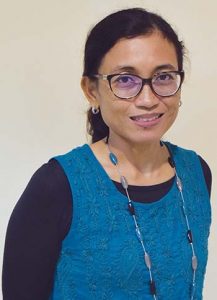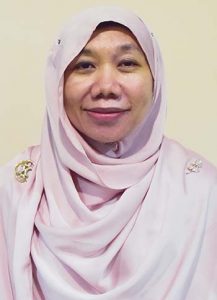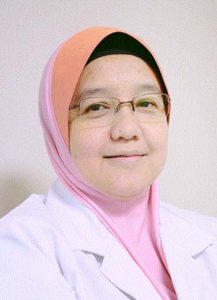Diabetes is the most common cause of blindness among adults aged 20-74 and not many people including diabetics are aware of this.
The 2006 National Health and Morbidity Survey found that about 15,000 to 39,000 Malaysians lose their sight because of diabetes. This condition is referred to as Diabetic Retinopathy, where diabetes causes damage to the blood vessels of the light-sensitive tissue at the back of the eye (retina).
In this article, we bring you the Health Ministry’s initiatives in tackling blindness caused by diabetes and why it is important for you to check for diabetic retinopathy once a year.
 “Malaysia will see an increase of ageing population, by 2030 the number is expected to be 4.9 million and unfortunately, they are not ageing healthily. We will see the rise of non communicable diseases such as diabetes and its associated issues of diabetic retinopathy” said Health Ministry’s (MOH) former Deputy Director General, Datuk Seri Dr Jeyaindran Sinnadurai.
“Malaysia will see an increase of ageing population, by 2030 the number is expected to be 4.9 million and unfortunately, they are not ageing healthily. We will see the rise of non communicable diseases such as diabetes and its associated issues of diabetic retinopathy” said Health Ministry’s (MOH) former Deputy Director General, Datuk Seri Dr Jeyaindran Sinnadurai.
1 Out Of 3
 “One in three diabetic patients are affected with diabetic retinopathy,”
“One in three diabetic patients are affected with diabetic retinopathy,”
said Hospital Putrajaya Consultant Endocrinologist and Endocrinology Service Malaysia Head, Dr Zanariah Hussein.
She said, “Screening for diabetic retinopathy is vital because the longer you have diabetes and the less controlled your blood sugar is, the more likely you are to develop this condition.”
Public Awareness Campaigns
The Health Ministry is committed to reduce the burden of Diabetic Retinopathy by increasing awareness in addition to continuous screening efforts. Under this initiative, the Ophthalmology teams from Hospital Shah Alam, Hospital Serdang and Hospital Putrajaya conducted a public awareness campaign that hosted on-site eye screening activities during the Komuniti Sihat Perkasa Negara (KOSPEN) Convention. Almost 25% of the 330 participants were found to have Diabetic Retinopathy, they were then successfully referred to ophthalmologists.
 Technical Working Group
Technical Working Group
“With the rising cases of diabetic Malaysians, including the younger population, MOH took the initiative to set up the Technical Working Group (TWG) for National Diabetic Retinopathy Screening in 2016,” said Hospital Putrajaya Consultant Endocrinologist, Dr Masni Mohamad.
“For this group, MOH brings together both endocrinologists and eye care specialists to cohesively manage this condition, which requires specialisation in diabetes and optometry care”.
The group consists of healthcare professionals from the MOH Ophthalmology and Endocrinology Services, the Primary Care Section of Family Health Development Division, Hospital Ampang, Hospital Sultanah Nur Zahirah, Hospital Putrajaya, Hospital Sungai Buloh, Disease Control Division and Putrajaya District Health Office.
 “The TWG initiated a partnership project between MOH hospitals and health clinics (klinik kesihatan) to create awareness on eye health, particularly for diabetic retinopathy amongst Malaysians, says Ophthalmology Service Malaysia Head, Dr Nor Fariza Ngah.
“The TWG initiated a partnership project between MOH hospitals and health clinics (klinik kesihatan) to create awareness on eye health, particularly for diabetic retinopathy amongst Malaysians, says Ophthalmology Service Malaysia Head, Dr Nor Fariza Ngah.
“As a result of the TWG’s efforts, 189 MOH healthcare professionals including diabetes educators from Eastern and Central Zones were trained on diabetic retinopathy screening. They were taught on how to use fundus cameras which are better alternatives to an ophthalmoscope commonly used at primary care level”.
Ophthalmoscopes VS Fundus Cameras
When using an ophthalmoscope, the patients’ eyes need to be dilated, requiring them to depend on caregivers to take them back and forth for check-ups. Furthermore, the majority of diabetic patients are treated at the primary care level where they are not exposed to healthcare professionals that have the skills to operate an ophthalmoscope. In most hospitals, this procedure is only conducted by ophthalmologists, reaching only a small percentage of diabetics.
Fortunately, a fundus camera avoids all these limitations, making it easy in terms of time and convenience. In fact, various healthcare professionals such as nurses, paramedics and even family medicine specialists are taught how to use it. With the launch of the ‘2017 Diabetic Retinopathy Screening Training Module for Healthcare Providers’ by the TWG, it greatly helped in educating these health care professionals, providing them with guidelines as a reference.
MOH recognised that there was an opportunity to make full use of this fundus camera for maximum screening. Therefore, they conducted various efforts with the TWG to reach as many patients at risk of diabetic retinopathy, in addition to equipping more health clinics (klinik kesihatan) with fundus cameras.
A workshop on how to handle a fundus camera for Diabetic Retinopathy screening was held at Hospital Shah Alam. There were 58 participants, consisting of medical officers and paramedics from 26 health clinics (klinik kesihatan). In addition to that, hands-on workshops at six states within the Eastern and Central Zones were held to educate healthcare professionals from these areas.
The TWG also held two pilot studies for fundus screening at Hospital Putrajaya and Klinik Kesihatan Jeram, which successfully reached a total of 1,792 diabetic patients.
“It was found that many patients do not go for regular screening because of the tedious eye dilation process,” says Dr Fariza. “However, findings from the pilot study illustrated an increase in patient satisfaction due to a shortened waiting time. Patients who were detected with any form of diabetic retinopathy regardless of severity were referred immediately to an ophthalmology clinic for further treatment”.
“The Ministry of Health is committed to reducing the impact of Diabetic Retinopathy in the Malaysian health sector. Although we are proactive in ensuring an increased level of awareness and accessibility to screening, it is within the patients’ hands to take proactive measures and get checked,” says Health Ministry Non-Communicable Diseases (NCD) Head, Dr Feisul Idzwan Mustapha. “I urge all diabetic patients to check for retinopathy once a year. With this, we aim to prevent avoidable blindness.”
The Technical Working Group with the support of the Health Ministry and patient participation can significantly reduce the burden of Diabetic Retinopathy in Malaysia through these preventive measures for early detection and management, which will greatly benefit the community.
References
National Health & Morbidity Survey, 2015
Lee, R., Wong, T. and Sabanayagam, C. (2015). Epidemiology of diabetic retinopathy, diabetic macular edema and related vision loss. Eye and Vision, 2(1).
Screening for Diabetic Retinopathy, 2017
Mayo Clinic. (2018).Diabetic retinopathy -Symptoms and causes. [online] Available at: https://www.mayoclinic.org/diseases-conditions/diabetic-retinopathy/symptoms-causes/syc-20371611 [Accessed 4 Jun. 2018].
Yau JW, et al. Global prevalence and major risk factors of diabetic retinopathy. Diabetes Care. 2012; 35(3): 556-564.


